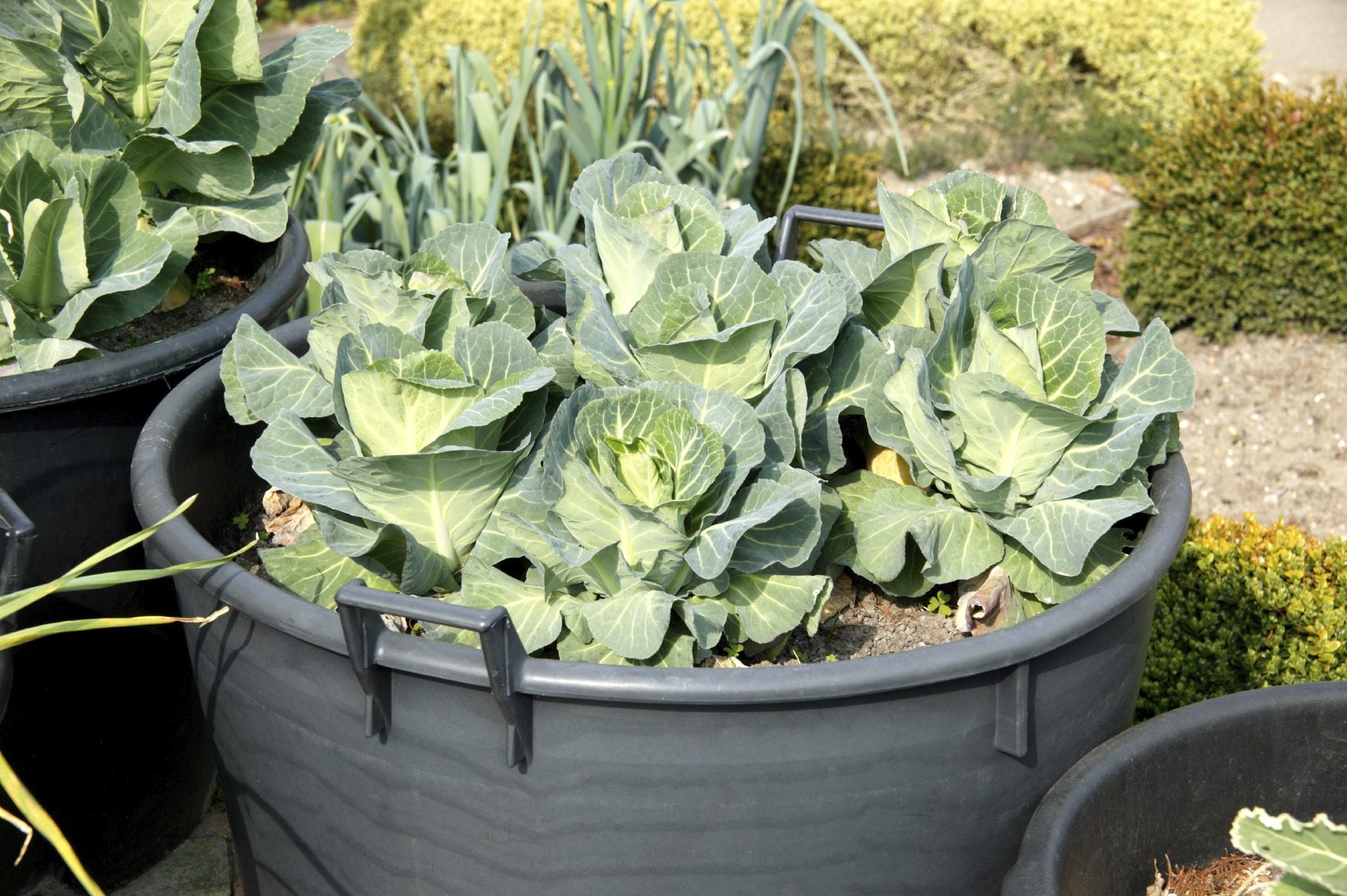Cabbage is a versatile and nutritious vegetable that forms the basis of many delicious dishes. While it’s commonly grown in garden beds, it’s also possible to cultivate cabbage in pots, making it accessible to urban dwellers and those with limited gardening space. In this article, we explore the feasibility of growing cabbage in pots, from pot selection to harvest.
I. Introduction
Cabbage is a staple in many cuisines worldwide, prized for its crisp texture and mild flavor. Traditionally, cabbage is grown in garden beds, but the advent of container gardening has made it possible to grow this versatile vegetable in pots. Cultivating cabbage in pots offers several advantages, including greater control over growing conditions and the ability to grow fresh produce in small spaces.
II. Choosing the Right Pot
A. Size Considerations
When growing cabbage in pots, it’s essential to choose a container that provides ample space for root development. Opt for pots that are at least 12-18 inches deep and wide enough to accommodate the mature size of cabbage plants. Larger pots allow for better air circulation and moisture retention, promoting healthy growth and preventing overcrowding.
B. Material Options
Pots for growing cabbage come in a variety of materials, including plastic, ceramic, and terracotta. Plastic pots are lightweight and durable, making them easy to move and maintain. Ceramic pots offer aesthetic appeal and excellent moisture retention but may be prone to cracking in cold temperatures. Terracotta pots are breathable and provide good drainage but may dry out quickly in hot weather.
C. Drainage Requirements
Proper drainage is essential for the health of cabbage plants grown in pots. Choose pots with drainage holes at the bottom to prevent waterlogging and root rot. Additionally, elevate the pots slightly on pot feet or bricks to ensure adequate drainage and prevent water from pooling around the roots.
III. Soil Preparation and Planting
A. Selecting the Right Soil Mix
Cabbage plants thrive in well-draining, nutrient-rich soil, so it’s essential to choose the right soil mix for your pots. Use a high-quality potting mix specifically formulated for vegetable gardening or create your own mix using equal parts of compost, peat moss, and perlite or vermiculite. Avoid using garden soil, as it may be too dense and prone to compaction in pots.
B. Planting Cabbage Seedlings or Seeds
Cabbage can be grown from either seedlings or seeds, depending on your preference and availability. If starting from seedlings, transplant them into your pots once they have developed a few true leaves. If starting from seeds, sow them directly into the pots at the recommended spacing, typically 12-18 inches apart.
C. Spacing and Arrangement
Proper spacing is essential for cabbage plants to grow and develop without crowding each other. Space the cabbage plants according to their mature size, ensuring that each plant has ample room to spread out and receive adequate sunlight and airflow. Avoid overcrowding, as this can lead to competition for nutrients and increased susceptibility to pests and diseases.
IV. Care and Maintenance
A. Watering and Fertilizing Needs
Consistent watering is crucial for the health and growth of cabbage plants in pots. Keep the soil evenly moist, but not waterlogged, and water whenever the top inch of soil feels dry to the touch. Additionally, fertilize the cabbage plants regularly with a balanced fertilizer to provide essential nutrients for healthy growth and development.
B. Sunlight and Temperature Requirements
Cabbage plants require full sun to thrive, so place your pots in a location that receives at least 6-8 hours of direct sunlight per day. Monitor the temperature and provide protection from extreme heat or cold as needed, especially during the summer months or in regions with fluctuating weather patterns.
C. Pest and Disease Management
Keep an eye out for common cabbage pests, such as cabbage worms, aphids, and cabbage loopers, and take proactive measures to control infestations. Use organic pest control methods, such as handpicking pests, applying insecticidal soap, or introducing natural predators like ladybugs, to minimize damage to your cabbage plants. Additionally, practice good sanitation and hygiene to prevent the spread of fungal diseases and other pathogens.
V. Harvesting and Enjoying Your Cabbage
A. Signs of Readiness for Harvest
Cabbage is typically ready for harvest when the heads feel firm and solid to the touch and reach their mature size. Look for tight, compact heads with vibrant coloration and crisp leaves, indicating peak freshness and flavor.
B. Harvesting Techniques
To harvest cabbage, use a sharp knife to cut the head from the stem at ground level, taking care not to damage the surrounding leaves or roots. Alternatively, you can harvest individual leaves as needed for a continuous harvest throughout the growing season.
C. Culinary Uses and Storage Tips
Freshly harvested cabbage can be enjoyed in a variety of culinary dishes, including salads, slaws, stir-fries, and soups. Store harvested cabbage heads in the refrigerator to prolong their freshness and shelf life, wrapping them in plastic or storing them in perforated plastic bags to retain moisture. Alternatively, you can blanch and freeze cabbage for long-term storage, allowing you to enjoy your homegrown produce year-round.






More Stories
Is there a lifetime limit on epidural steroid injection?
What is Section 20 of the Motor Accident Insurance Act (Queensland)?
Where to Watch USMNT vs Jamaica National Football Team